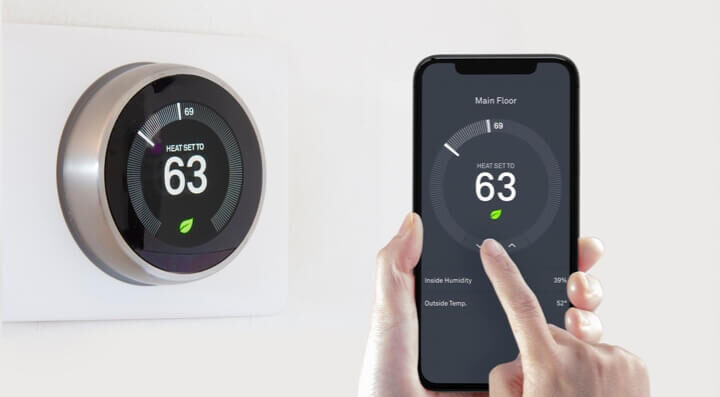Debunking energy efficiency myths: Easy and affordable upgrades for renters
02/14/2024
Renters face unique challenges when it comes to reducing their energy consumption. Many factors that affect residential energy usage may be controlled by the property manager or owner. So renters may feel like they have no say about the home’s structure, appliances, heating and cooling, and levels of insulation.
In addition, some renters believe that energy efficiency is not a cost-effective investment. But there are many ways for renters to make eco-friendly upgrades that pay off in the short and long term.
Virginia Energy Sense is here to debunk myths about the benefits of energy-efficient living in rental properties.
MYTH #1: The renter is fully responsible for any energy-efficient upgrades.
- Ask the property manager or owner if they would be willing to make certain upgrades, such as installing a programmable thermostat or replacing kitchen appliances with more energy-efficient models. This upgrade would benefit both of you. The changes would not only cut your energy costs but also increase the building’s value.
- Some property managers are open to reducing your rent if you take on projects to improve the home’s energy efficiency in the long term. Discuss this possibility with them before spending money on routine heating and air conditioning maintenance, supplies for weatherizing your home, and more.
MYTH #2: Energy-efficient upgrades are expensive and do not financially benefit the renters who plan to reside temporarily.
- Although energy-efficient products require an upfront cost, the long-term financial benefits are greater than that cost. You can also check with your utility company about rebates. After making the switch to energy-efficient products, you may notice a lower electric bill in the first month. Here are just a few energy-efficient products to consider:
- Programmable thermostats, which can cost as little as $15, allow you to program temperature changes when you’re at work or asleep. This saves you money on heating and cooling.
- Smart thermostats automatically adjust the temperature based on your preferences and allow you to remotely control the device from anywhere in the world with your smartphone, tablet, or computer. These thermostats can cost as little as $40 and can save you up to $150 annually on your home energy bill.
- If you want to use less water and spend less on water heating, pick up a smart, water-efficient showerhead. They can cost as little as $25, and they do more than lower your water usage. Many of these devices can detect the water temperature and slow the flow down to a drip until it reaches the perfect temperature. That means no more hanging around waiting for the shower to heat up. Some of the showerheads even include Bluetooth speakers.
MYTH #3: Energy-efficient upgrades are complicated and require a lot of effort.
- Many energy-saving products are easy to install and very user-friendly. Here are some examples of low-effort upgrades:
- Use an electric blanket. They can cost as little as $10, and they use 90% less energy than the average portable heater.
- Place draft stoppers at your doors. Air leaks and drafts are among the biggest money wasters. The U.S. Department of Energy estimates that sealing drafty windows and doors can lower your monthly energy bill by 20%. For the crafters and DIYers out there, this is a fun item you can make at home. You just need some decorative fabric and cylindrical materials, like pool noodles or old socks!
- Does it seem as though the air coming out of your vents isn’t properly warming or cooling your space? With an air deflector or vent cover, you can easily adjust the flow of air to better heat or cool your home. Air deflectors, in particular, allow you to direct the airflow left or right, or up or down, depending on your vent placement. To best blend the temperature in the space, cool air should be directed upward, and warm air downward. Deflectors and covers are easy to use and can cost as little as $4.
MYTH #4: Reducing your energy usage will not make a significant impact on the environment.
- According to ENERGY STAR, energy efficiency is one of the most cost-effective ways to combat climate change and keep the air we breathe clean. When we use less energy, power plants burn less fossil fuel — which means they release less greenhouse gases and other pollutants.
Whether you’re in a rental for the year or longer, there is always something you can do to save energy. Reducing your energy usage can be inexpensive and easy, and it saves you money on your monthly bills. Energy efficiency can start in the home — and you can make a difference today!